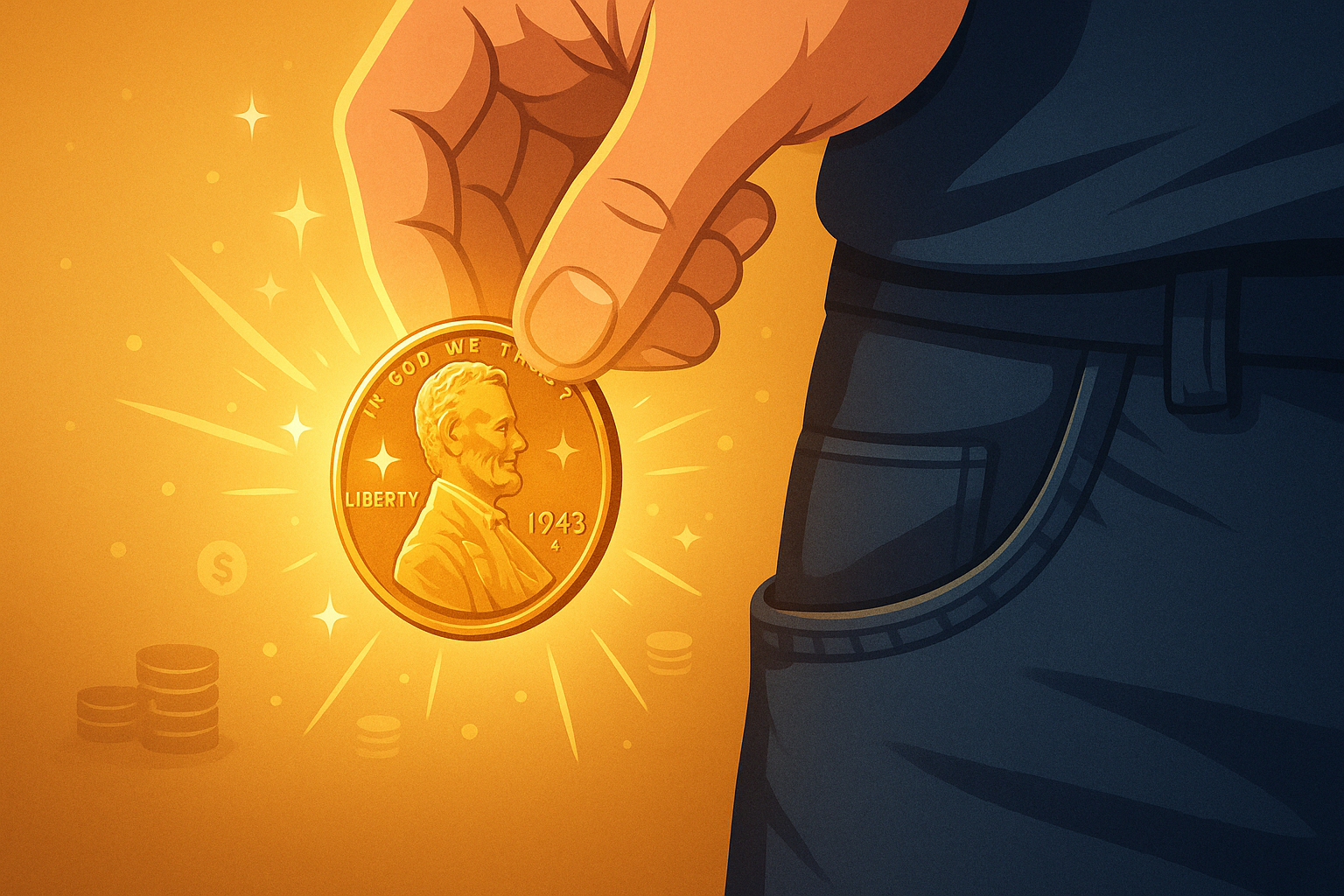A Penny That Sparked a Fortune
On an ordinary afternoon, Michael stumbled upon his grandfather’s cigar box tucked away in the attic. Inside, among postcards, stamps, and faded letters, a dull penny rested at the bottom. Its edges were worn, but the reverse bore two wheat stalks — unlike any modern coin he’d seen.
Curiosity led him down a rabbit hole of numismatic forums, coin guides, and appraisal services. Weeks later, the whispers turned into headlines: this coin could be worth as much as $14 million.
What makes a 1-cent coin so extraordinary? Let’s dive into the story of the Lincoln Wheat Penny.
The Birth of the Lincoln Wheat Penny
- Year Introduced: 1909, marking the 100th anniversary of Abraham Lincoln’s birth.
- Designer: Victor David Brenner, whose initials “VDB” on some coins stirred controversy.
- Unique Feature: Two wheat ears framing the denomination “ONE CENT” on the reverse, symbolizing prosperity.
- Minting Years: 1909–1958, after which the Memorial reverse replaced it.
Why Some Pennies Are Worth Millions
Not all Wheat Pennies are created equal. While most are worth mere cents, certain coins became legends due to rarity, errors, or unusual history.
Famous Examples
- 1943 Copper Wheat Penny – During WWII, pennies were struck in steel to save copper for the war. But a few were mistakenly struck in copper. One sold for over $1.7 million.
- 1944 Steel Wheat Penny – The opposite error: steel planchets mistakenly used after the war. These can fetch six figures.
- Double-die errors – Where designs were imprinted twice, creating visible doubling in the date or lettering. These are beloved by collectors.
The $14 Million Claim: Fact or Fiction?
The jaw-dropping $14 million valuation is often cited in sensational headlines. While public auction records don’t confirm such a sale, the buzz highlights a deeper truth: rare coins can reach astonishing prices, especially if tied to historical intrigue or one-of-a-kind minting errors.
Value Comparison
| Wheat Penny Type | Typical Value | Error Coin Value | Hyped/Claimed Value |
|---|---|---|---|
| Common 1940s–1950s | $0.05 – $0.50 | $100 – $500 | — |
| Key Dates (1909-S VDB, 1914-D) | $200 – $5,000 | Higher if pristine | — |
| 1943 Copper Penny | $100,000 – $1.7M | Verified auction sales | — |
| “$14 Million Penny” | — | — | Speculative, unverified |
How to Spot a Valuable Wheat Penny
- Check the Date & Mint Mark – Key years: 1909-S VDB, 1914-D, 1922 no D, 1943 copper.
- Examine Weight & Color – A copper penny weighs ~3.11g; a steel penny weighs ~2.7g.
- Look for Errors – Doubling, off-center strikes, or unusual features.
- Professional Grading – PCGS or NGC can authenticate and assign value.
A Collector’s Perspective
Numismatists often say: “Every coin tells a story.” The Wheat Penny isn’t just metal; it’s a snapshot of American history — Lincoln’s legacy, wartime sacrifices, minting evolution. Even if your penny isn’t worth millions, it may still hold priceless sentimental or historical value.
FAQs
Has anyone actually sold a Wheat Penny for $14M?
No verified record exists. The claim is likely speculative, but it underscores how valuable some rare pennies can be.
Which Wheat Pennies are most valuable?
1909-S VDB, 1914-D, 1922 no D, and the 1943 copper penny are among the most sought after.
How can I safely check if my penny is copper or steel?
Use a magnet — steel pennies will stick, copper ones won’t.
Can I still find Wheat Pennies in circulation?
Yes, though rare. They sometimes appear in pocket change, estate sales, or coin rolls from banks.
What’s the best way to sell one?
Go through established auction houses like Heritage Auctions or Stack’s Bowers, or certified dealers with strong reputations.
Final Thought
The story of the Lincoln Wheat Penny is a reminder that treasures can hide in plain sight. Whether yours is worth a few cents or millions, each coin carries the weight of history in your hands.













